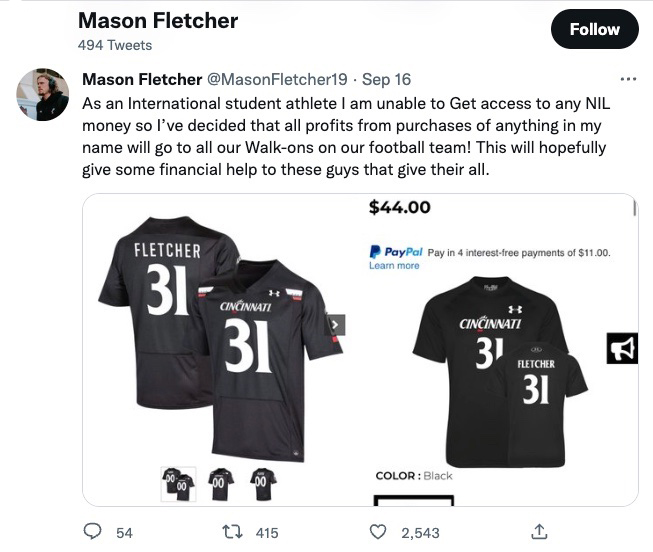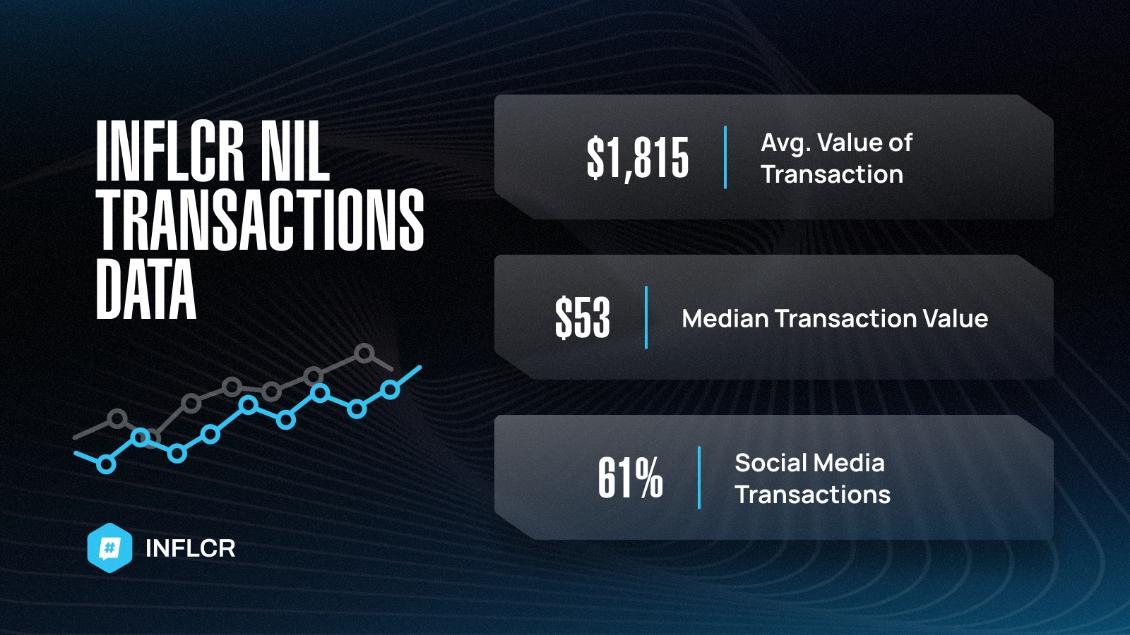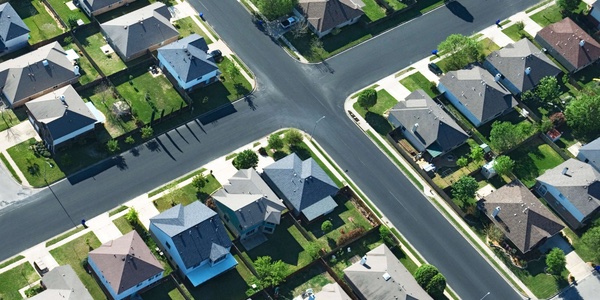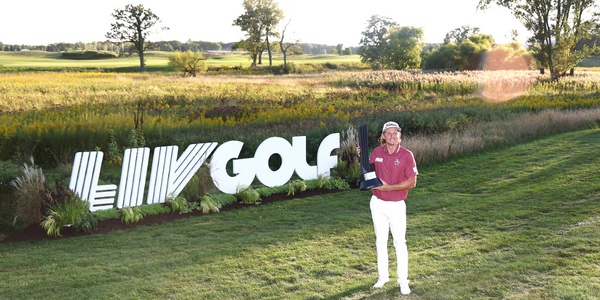
Amidst all the mess, there's a ton of fun, creativity, and even philanthropy. What's even more exciting is how NIL has created an opportunity for female athletes to profit off their most lucrative years in the spotlight.
Natalie Welch Assistant Professor, MBA SEM
by Natalie M. Welch
Natalie M. Welch joined Albers in the fall of 2022 as assistant professor of the MBA in Sport and Entertainment program. An alumnus of the University of Tennessee and the University of Central Florida, she is an enrolled member of the Easter Band of Cherokee Indians and grew up in Cherokee, North Carolina. Here she shares her views on how NIL -- name, image, and likeness -- is disrupting college athletics.
Every individual person has the right to capitalize on their own name, image, or likeness (NIL)
This is every person’s right to publicity. We see it everywhere, the Jordan Jumpman logo, the Prince symbol, and everything the Kardashians decide to put their name on.
But for something so seemingly simple, it has created a huge mess in the college athletics ecosystem. So much so that the phrase 'wild west' has become cliché when referring to NIL in college athletics.
We are less than two years into NIL and athletes from high school to college, coaches, and administrators are still playing catch up, and in most cases, just trying to figure out what to do about NIL.
Upholding the sanctity of 'amateurism'
One of the major tenets of the National Collegiate Athletic Association (NCAA) is that athletes are amateurs, previously meaning athletes shouldn’t make money from their own jersey sales or autographs. While their fellow student could make money off tutoring, athletes were forbidden in the name of upholding the sanctity of 'amateurism'.
I use quotes because if you have seen big-time Division I college sports you have probably noticed there’s not much separating college from professional sports. You have elite-level athletes, new shiny gear, state-of-the-art facilities, absurdly overpaid coaches, and administrators sometimes selected solely for their ability to run a successful athletics program.
For nearly a hundred years, college athletics have moved away from student-led organized sport to an academic façade and an arms race between institutions trying to flex their own hypothetical muscles.
We must remember NIL was a forced concession, not a sign of innovation by the NCAA
When news came of new NIL legislation by the state of California in the fall of 2019, there were those who thought it could change (even ruin) college sports. There were others who didn’t consider it news at all, dismissing it as a blip in the constant tension between the workforce (college athletes) and the corporation (college presidents, athletic directors, and coaches).
More than a dozen states began adopting similar policies so that by June 30th, 2021 the NCAA was forced to approve an interim policy that suspended their previous rules prohibiting endorsements for student-athletes. Literally, the day before the laws of the states went into effect and about a month before student-athletes began returning to their respective campuses.
The NCAA also pushed the buck to the states (something it’s been doing quite frequently with new legislation), requiring that students be in accordance with the law of the state where their school was located. States have already revised their laws to adapt to the changing landscape. By this summer 43 states had enacted or considered laws around NIL.
If it’s starting to sound complicated, that’s because it is
Student-athletes are required to report their name, image, and likeness consistent with state law or school and conference requirements to their school. Students are allowed to hire professional services for the NIL activities as long as those agents aren’t connected to institutions or actual professional leagues. Many (I’d even argue most) schools simply don’t have the resources to manage the required reporting system.
There’s still not a clear checks and balances process from the NCAA when it comes to NIL, just looming threats of sanctions and public hand-slapping.
All this has quickly shown the holes in the power dynamics of college sports
Donors who once gave lavishly to their institutions’ athletics departments are forming collectives or just funneling money to players directly through their own businesses. This money is not supposed to be an inducement or a tool used for recruitment, but it’s obviously impacting potential students when they see what other students are getting at certain institutions.
Objectors say NIL creates an unnecessary distraction for teams, pitting athletes against one another as if scholarships and other perks weren’t already doing that. Some institutions have created majors in entrepreneurship to help their athletes better manage their NIL situation. Controversial brands and companies like Barstool sports use NIL to position themselves to create a pipeline of content creators.

Amidst all the mess, there’s a ton of fun, creativity, and even philanthropy. Offensive linemen on football teams have been sponsored by BBQ restaurants. DeColdest Crawford (above, and yep that’s his name), a Nebraska football player, has starred in local commercials for SOS Heating and Cooling.
What’s even more exciting is how NIL has created an opportunity for female athletes to profit off their most lucrative years in the spotlight.
'In NIL, female athletes generate 4x more total audience engagement & 7x more engagement per deal than males, despite having fewer than half as many partnerships–which may compel brands that traditionally favor men’s sports to revisit their marketing strategies' - @sponsorunited
The NIL policy is not without its pain points
For example, many international athletes are in the U.S. with F-1 visas, and their opportunities to earn money are strictly limited. However, there’s more creativity. Cincinnati's Australian punter, Mason Fletcher, not able to make money as an international athlete, is giving all would-be earnings from his apparel sales to the team's walk-on athletes.

What’s probably the most hopeful is how many athletes are using their platforms to raise awareness of philanthropic causes, sometimes donating portions of their proceeds to charity.
We’re currently in the midst of college football season [at this time of writing], arguably the biggest college sport, and five NCAA coaches have been fired within the first five weeks of this year’s college football season. The universities owe them a total of $56.7 million in buyout money.
This means schools are paying coaches nearly $60 million to NOT coach. These firings will allow programs to 'start fresh' and get back in the brand-building race. An administrator recently said, 'There’s another coach at a school near us who has effectively said, "I need $3 million in NIL or you can look for $12 million to fund my buyout and really the choice is yours." That’s really the reality these days, that programs that want to win and want to be competitive, if they aren’t playing the NIL game and they’re not supporting it, it’s going to be really, really challenging to get the student-athletes that you want because they’re going to be able to find a very lucrative offer somewhere else.'
Looking at NIL economics and coaching salaries isn’t comparing apples to apples but there is certainly a cause and effect in a sport so monetarily driven.
Lucrative and ludicrous business decisions have become the norm in college sports. It’s almost as if giving power back to those performing, back to the student-athletes, has started to correct the out-of-wack equilibrium, if only a little bit. We live in an age of influencers over celebrities and the old guard must realize that changes must be made before their own rights get swept out from under them. When you’re in the business of exploitation, you always have to be looking over your shoulder.



